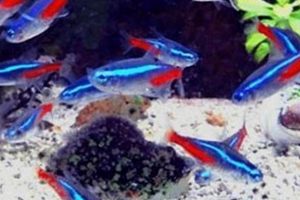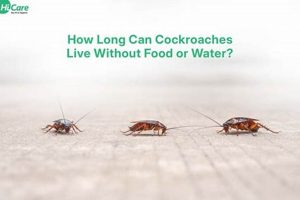Depriving equines of sustenance presents a grave threat to their well-being. The duration a horse can survive without access to nourishment and hydration is severely limited. Survival time depends heavily on factors such as environmental temperature, the horse’s overall health, age, workload, and access to any alternative sources of moisture or forage. Without intervention, the consequences can quickly become dire.
Understanding the crucial needs for hydration and nutrition is essential for responsible equine care. A horse’s reliance on consistent access to food and water stems from its physiological makeup and digestive processes. Compromising these fundamental requirements can lead to a cascade of negative health effects, including dehydration, colic, organ damage, and ultimately, death. Historically, knowledge of these limitations has been paramount for ensuring the health and productivity of working animals.
The following sections will explore the specific timeframes a horse can endure without food and water, detailing the physiological impacts of deprivation and outlining the essential steps for prevention and intervention to safeguard equine welfare. Factors impacting these timeframes will be addressed, along with clinical signs of dehydration and starvation to allow for prompt recognition and veterinary intervention.
Safeguarding Equine Welfare
Ensuring consistent access to food and water is paramount for maintaining the health and well-being of horses. Understanding the limitations imposed by nature and implementing preventative measures is critical for responsible equine ownership.
Tip 1: Provide Constant Access to Clean Water: Access to potable water should be available ad libitum. The average horse consumes between 5 and 15 gallons of water daily, varying with weather and workload. Automatic waterers or regularly cleaned buckets should be used.
Tip 2: Ensure Consistent Forage Availability: Horses are designed to graze continuously. Providing hay or pasture throughout the day supports digestive health and prevents boredom. Consider slow-feeders to extend feeding time and minimize the risk of colic.
Tip 3: Monitor Environmental Conditions: In hot weather, water intake increases significantly. Provide shade and ensure adequate ventilation to prevent dehydration. In cold weather, ensure water sources do not freeze and that horses consume enough to avoid impaction colic.
Tip 4: Observe for Signs of Dehydration: Monitor for clinical signs, including sunken eyes, delayed capillary refill time (greater than two seconds), decreased skin turgor, and dry mucous membranes. These signs warrant immediate veterinary attention.
Tip 5: Evaluate Body Condition Score Regularly: A body condition score (BCS) provides an objective assessment of a horse’s nutritional status. Aim for a BCS of 5-6 on a scale of 1-9. Adjust feed rations accordingly to maintain optimal body weight.
Tip 6: Implement a Parasite Control Program: Internal parasites can significantly impair nutrient absorption, leading to weight loss and malnutrition. A strategic deworming program, guided by fecal egg counts, is essential.
Tip 7: Provide Electrolytes After Strenuous Exercise: Sweating depletes electrolytes. Replenishing these electrolytes with a balanced electrolyte supplement helps maintain hydration and supports muscle function, particularly in hot climates or after demanding workouts.
Prompt action and vigilance are essential to preventing adverse outcomes associated with food and water restriction. Proper management prevents serious health complications and ensures the horse’s overall well-being.
The next section will delve into the potential health consequences of prolonged deprivation and outline emergency procedures in cases of extreme neglect or natural disasters.
1. Water
The designation of water as “Critical” in the context of how long an equine can survive without food and water underscores its absolute necessity for physiological function and survival. The availability of water directly dictates the timeframe a horse can endure deprivation, making it the most limiting factor.
- Thermoregulation
Water plays a vital role in thermoregulation through evaporative cooling (sweating). When water is scarce, a horse’s ability to regulate its body temperature is compromised, leading to hyperthermia, especially under conditions of heat or exertion. Dehydration thickens the blood, decreasing the efficiency of heat transfer from the body core to the skin surface, thereby exacerbating the risk of heat stress. This reduced thermoregulatory capacity dramatically shortens survival time.
- Digestive Function
Proper hydration is essential for digestive processes. Water aids in the breakdown and transport of nutrients within the gastrointestinal tract. Insufficient water intake can lead to impaction colic, a potentially fatal condition where the digestive tract becomes blocked due to dry ingesta. This cessation of normal digestive function further accelerates the decline in health and reduces the horse’s ability to withstand food deprivation.
- Cellular Function and Metabolism
Water is a fundamental component of cells and is involved in nearly every metabolic process. Dehydration disrupts electrolyte balance, impairs kidney function, and hinders the transport of oxygen and nutrients to tissues. This systemic disruption of cellular function results in rapid deterioration of organ systems, severely diminishing the horse’s resilience to both food and water deprivation.
- Waste Elimination
The kidneys require adequate water to filter waste products from the blood. Dehydration concentrates these waste products, placing increased stress on the kidneys and potentially leading to kidney failure. The accumulation of toxins in the bloodstream further compromises the horse’s physiological state and shortens the window of survival without water.
The interplay between water availability and these critical physiological functions emphasizes why water is paramount. Lack of water rapidly precipitates a cascade of detrimental effects, significantly reducing the period an equine can survive. The “Critical” designation serves as a reminder that consistent access to potable water is non-negotiable for responsible equine management. Its absence overshadows all other factors in determining survival duration.
2. Food
While the absence of water presents an immediate and critical threat to equine survival, the designation of “Food: Secondary Priority” in the context of how long a horse can endure deprivation reflects a slower, but ultimately significant, decline. A horse can survive longer without food than without water, but the effects of starvation compromise overall health and resilience, eventually leading to death. The timeframe for survival without food is significantly influenced by factors such as the horse’s initial body condition, metabolic rate, environmental conditions, and level of activity. An overweight horse will initially fare better than an underweight one, as it has stored energy reserves to draw upon. However, prolonged starvation leads to muscle wasting, organ damage, and a weakened immune system, making the horse increasingly vulnerable to disease.
The digestive physiology of the horse underscores the importance of continuous forage intake, even when facing food scarcity. Equines are designed to graze continuously, and their digestive systems rely on a constant flow of fiber to maintain gut motility and prevent colic. When deprived of food, the horse’s digestive tract can become compromised, leading to impaction and a higher risk of gastric ulcers. Furthermore, the lack of nutrients affects all bodily systems, reducing the horse’s ability to withstand other stressors, such as extreme weather or infection. Wild horses, for example, can survive periods of scarce forage by slowing their metabolic rate and reducing activity. However, domesticated horses, particularly those with higher metabolic demands due to exercise or lactation, are more susceptible to the negative impacts of food deprivation.
In conclusion, the “Food: Secondary Priority” label highlights the critical, albeit less immediate, role of nutrition in equine survival. While a horse can live longer without food than without water, the consequences of prolonged starvation are severe and ultimately fatal. Maintaining consistent access to adequate forage is essential for preventing nutritional deficiencies, supporting overall health, and maximizing the horse’s ability to withstand periods of environmental stress. Therefore, responsible equine management necessitates prioritizing both water and food, even while recognizing the more rapid threat posed by dehydration.
3. Environment
The external environment plays a crucial role in determining equine survival time when food and water are scarce. Ambient temperature, humidity, and availability of shelter significantly influence a horse’s metabolic rate, hydration needs, and energy expenditure, directly impacting how long it can survive without sustenance.
- Temperature Extremes
High temperatures increase water loss through sweating, accelerating dehydration and reducing the survival timeframe without water. Conversely, cold temperatures necessitate increased energy expenditure to maintain body temperature, depleting energy reserves faster and shortening the survival period without food. The combination of extreme temperatures and limited resources creates a significantly challenging situation.
- Humidity Levels
High humidity hinders evaporative cooling, making it harder for horses to regulate their body temperature in hot weather. This increased physiological stress exacerbates dehydration and heat stress, further diminishing survival prospects without water. Low humidity can increase the rate of evaporative water loss, also accelerating dehydration.
- Shelter Availability
Access to shelter from sun, wind, and precipitation reduces energy expenditure associated with thermoregulation. Shade minimizes heat stress and water loss in hot weather, while windbreaks and shelter from rain or snow decrease the energy needed to stay warm in cold weather. Lack of shelter necessitates the horse expend more energy, shortening its survival time without food.
- Terrain and Accessibility
Difficult terrain, such as rocky or steep landscapes, increases the energy cost of foraging and accessing potential water sources. If resources are scarce, horses in challenging environments expend more energy seeking sustenance, depleting their reserves faster than those in easily navigable areas. Accessibility to available resources is as critical as the presence of the resources themselves.
The interplay between these environmental factors emphasizes their considerable influence on equine survival. The duration a horse can survive without food and water is significantly reduced when it is exposed to temperature extremes, high humidity, a lack of shelter, and challenging terrain. Responsible equine management includes mitigating these environmental stressors to maximize the chances of survival during periods of resource scarcity. By providing appropriate shelter, ensuring access to water, and managing the environment to reduce stress, the impact of food and water deprivation can be lessened.
4. Health
The pre-existing health status of a horse exerts a significant influence on its ability to withstand periods of food and water deprivation. A compromised state of health reduces physiological reserves and impairs the body’s ability to cope with the stressors associated with limited sustenance. The interplay between existing health issues and deprivation directly impacts how long a horse can survive.
- Parasitic Load
A high internal parasite burden significantly impairs nutrient absorption and can lead to anemia and weight loss. Horses heavily infested with parasites are less able to utilize available food resources, and their already compromised health state accelerates the detrimental effects of food deprivation. The energy expended combating the parasitic infection further depletes reserves, shortening survival time. Clinical signs include weight loss, poor coat condition, and lethargy.
- Dental Issues
Dental problems, such as sharp points, missing teeth, or malocclusion, can hinder a horse’s ability to effectively chew and digest food. This reduced digestive efficiency means the horse extracts fewer nutrients from the available forage, increasing the risk of malnutrition. Horses with dental issues are particularly vulnerable during periods of food scarcity, as they struggle to maintain adequate body condition, exacerbating the consequences of deprivation.
- Metabolic Disorders
Horses with metabolic disorders, such as Equine Metabolic Syndrome (EMS) or Pituitary Pars Intermedia Dysfunction (PPID, Cushing’s disease), often have impaired insulin regulation and altered metabolic rates. These conditions can affect their ability to utilize energy reserves efficiently, making them more susceptible to the negative effects of food deprivation. Furthermore, these disorders can compromise the immune system, increasing vulnerability to infection. PPID horses, for example, can struggle to regulate body temperature or fend off infections without normal adrenal function.
- Underlying Diseases
Horses suffering from chronic diseases, such as kidney disease, liver disease, or heart disease, have reduced physiological reserves and impaired organ function. These conditions compromise their ability to cope with the stress of food and water deprivation. The added burden of limited sustenance can accelerate disease progression and lead to organ failure, significantly reducing survival time. Careful attention to these concurrent diseases is thus important.
The interplay between these health factors and the stress of deprivation highlights the importance of preventive healthcare. Regular veterinary check-ups, appropriate parasite control, dental care, and management of underlying diseases are crucial for optimizing a horse’s health and resilience. Addressing these health concerns minimizes the negative impact of food and water scarcity, increasing the horse’s ability to survive periods of limited resources, either due to environmental factors or human neglect.
5. Activity
The level of physical exertion significantly impacts the duration an equine can survive without food and water. Demanding activity increases metabolic rate, accelerates energy expenditure, and elevates fluid losses, thereby shortening the timeframe a horse can endure deprivation. The physiological consequences of intense activity exacerbate the negative effects of limited sustenance.
- Increased Metabolic Rate
Demanding activities, such as racing, endurance riding, or heavy draft work, elevate the metabolic rate, increasing the body’s demand for energy. When food intake is restricted, the horse is forced to catabolize muscle tissue and fat reserves to meet energy needs. This process leads to rapid weight loss, muscle wasting, and decreased physical performance. Without adequate nutritional support, the accelerated metabolic rate drastically reduces the horse’s ability to withstand food deprivation.
- Elevated Fluid Losses
Strenuous exercise induces significant fluid losses through sweating. Sweat contains electrolytes, which are essential for maintaining fluid balance, nerve function, and muscle contraction. When water intake is limited, the horse becomes dehydrated, leading to decreased blood volume, impaired kidney function, and muscle cramping. Dehydration impairs performance, increases the risk of colic, and reduces the time a horse can survive without access to water.
- Compromised Thermoregulation
During demanding activity, horses generate substantial heat. Adequate hydration is crucial for dissipating this heat through evaporative cooling (sweating). Dehydration impairs the horse’s ability to regulate its body temperature, leading to hyperthermia (overheating), which can cause organ damage and even death. Exercise exacerbates the effects of water deprivation on thermoregulation, reducing the timeframe a horse can survive without water.
- Stress Hormone Release
Demanding activity can induce physiological stress, leading to the release of stress hormones such as cortisol. Chronic stress can suppress the immune system, making the horse more susceptible to illness and infection. Stress also increases metabolic rate and energy expenditure, further depleting reserves when food intake is limited. This combination of immunosuppression and increased energy demands compromises the horse’s overall health and resilience during periods of deprivation.
The combination of increased metabolic demands, elevated fluid losses, impaired thermoregulation, and stress hormone release underscores the critical importance of providing adequate food and water to horses engaged in demanding activities. Restricting access to sustenance while requiring strenuous physical exertion significantly reduces survival time. Responsible equine management necessitates adjusting feeding and hydration strategies to meet the increased needs of working horses, thereby minimizing the detrimental effects of food and water scarcity and promoting overall health and performance.
6. Survival
The designation “Survival: Limited” serves as a stark reminder that the period an equine can endure without food and water is finite, constrained by physiological limitations and environmental factors. It underscores the urgency of responsible equine care and the potential for dire consequences if basic needs are neglected. This finite nature necessitates a thorough understanding of the factors that influence survival time, as well as the clinical signs of deprivation, to ensure timely intervention.
- Physiological Thresholds
Equine survival is fundamentally limited by the physiological thresholds for water and nutrient balance. Dehydration rapidly disrupts cellular function, compromising organ systems and leading to irreversible damage within a matter of days. Similarly, prolonged starvation leads to the depletion of energy reserves, muscle wasting, and immune dysfunction, ultimately resulting in death. These physiological limits dictate the absolute maximum duration a horse can survive without sustenance, even under ideal conditions. Cases of neglect or abandonment often demonstrate how quickly these thresholds can be breached.
- Cumulative Stress
The stress associated with food and water deprivation is cumulative, meaning that each day without sustenance weakens the horse’s physiological reserves and reduces its capacity to recover. This cumulative effect is particularly pronounced in horses with pre-existing health conditions or those exposed to environmental stressors. The longer the period of deprivation, the lower the likelihood of successful recovery, even with veterinary intervention. Rescued horses often exhibit long-term health complications stemming from the cumulative stress of starvation and dehydration, even after nutritional support is restored.
- Reversibility of Damage
The damage caused by food and water deprivation can become irreversible, even if sustenance is eventually provided. Prolonged dehydration can lead to permanent kidney damage, while severe starvation can cause irreversible muscle wasting and organ dysfunction. The point at which the damage becomes irreversible varies depending on individual factors, but it underscores the importance of early intervention. Horses found severely emaciated may experience refeeding syndrome, a life-threatening condition that occurs when nutritional support is introduced too rapidly after prolonged starvation. Preventing irreversible damage demands the identification and treatment of any underlying health conditions.
- Ethical Responsibility
The “Survival: Limited” designation carries significant ethical implications for equine caregivers. It emphasizes the moral obligation to provide adequate food, water, and shelter to ensure the well-being of horses under their care. Neglecting these basic needs constitutes a violation of animal welfare principles and can result in legal consequences. Recognizing the limited timeframe for survival underscores the urgent need for responsible management practices to ensure the health and safety of all equines.
These facets of “Survival: Limited” collectively highlight the precarious nature of equine health when food and water are scarce. Understanding the physiological thresholds, cumulative stress, reversibility of damage, and ethical responsibilities associated with deprivation is essential for promoting responsible equine care and preventing unnecessary suffering. The finite nature of survival underscores the need for vigilance, early intervention, and a commitment to ensuring the basic needs of all horses are met.
Frequently Asked Questions
The following addresses common inquiries concerning the duration a horse can survive without sustenance. Information provided serves to educate on responsible equine care and potential consequences of deprivation.
Question 1: What is the maximum time a horse can survive without water in moderate conditions?
Under moderate environmental conditions, a horse can typically survive for three to six days without water. This timeframe can be significantly reduced by factors such as high temperatures, strenuous activity, or pre-existing health conditions.
Question 2: How long can a horse survive without food, assuming it has access to water?
A horse can survive several weeks without food, provided it has access to water. However, prolonged starvation results in severe muscle wasting, organ damage, and a compromised immune system, significantly impacting its overall health and well-being.
Question 3: Does the breed of a horse affect its ability to withstand food and water deprivation?
While breed may influence metabolic efficiency and body composition, its direct impact on survival time without food and water is less significant than factors such as overall health, body condition, and environmental conditions. Individual variation within a breed is more influential.
Question 4: What are the first signs of dehydration in a horse?
Early signs of dehydration include sunken eyes, delayed capillary refill time (greater than two seconds), decreased skin turgor (skin tenting), dry mucous membranes, and reduced urine output. Prompt veterinary intervention is crucial upon observing these signs.
Question 5: What are the long-term health consequences of prolonged food and water deprivation in horses?
Prolonged deprivation can lead to irreversible kidney damage, liver dysfunction, muscle wasting, cardiac abnormalities, a compromised immune system, and an increased susceptibility to infection. In severe cases, it can result in death, even after nutritional support is restored.
Question 6: What immediate steps should be taken if a horse is found to be severely dehydrated and malnourished?
Immediate steps include providing access to fresh, clean water in small amounts initially, contacting a veterinarian for assessment and treatment, and gradually reintroducing food to avoid refeeding syndrome. Avoid overfeeding initially, as this can be detrimental.
Maintaining consistent access to both food and water is vital for responsible equine care. Deprivation can lead to severe, irreversible health complications, emphasizing the need for vigilance and prompt intervention.
The following sections will address preventative management strategies for assuring sufficient access to food and water and emergency protocols should deprivation occur.
Conclusion
The exploration of “how long can a horse go without food and water” reveals the narrow margin between survival and critical health compromise. Timeframes for both water and food deprivation are finite, significantly impacted by environmental conditions, pre-existing health issues, and activity levels. Water deprivation poses a more immediate threat, leading to organ failure within days, while prolonged food scarcity results in a slower but equally detrimental decline, marked by muscle wasting, immune dysfunction, and increased vulnerability to disease.
Responsible equine management necessitates a commitment to consistently providing adequate food and water, recognizing that even brief periods of deprivation can have lasting consequences. Vigilance, early intervention, and a proactive approach to addressing health concerns are essential for safeguarding equine well-being and preventing unnecessary suffering. The health and productivity of horses depend on ensuring their fundamental physiological needs are met without interruption.







